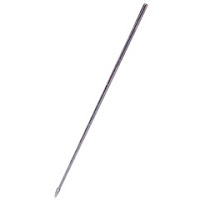
This is a very nice poster indeed. The consistent colour scheme is indeed a simple, but underused element of poster design. It indicates that the authors honed their graphics specifically with the poster in mind, and that they didn’t just dump figures prepared for a journal article or slide onto the poster.
Is there room for improvement? Maybe some small ones.

The column widths are uneven. The width of the first column is shown by the horizontal cyan bar in the left and center columns. Fortunately, in this case the unevenness is so slight that it’s not noticeable at first. Still, it’s surprising given how much attention has been paid to the poster.
Otherwise, the major question is whether so many lines are necessary. The layout is so crisp that nobody is likely to have any problems following the flow through, making the numbers unnecessary. Similarly, the horizontal diving lines seem to serve little purpose. The vertical dividers are more understandable, given that the authors chose to set their text ragged right.
Finally, some figures are set up in boxes, but others are not. And the line heaviness of the boxes are inconsistent, with the ones on the right more prominent that the one at bottom center.
Here’s the poster with some of these possibly extraneous elements removed.

I’m not sure whether the edited version is a substantial improvement, but I think it does point out that when the basic layout is solid, a reader doesn't need a lot of help in deciding what to read next and won’t be confused about which elements belong together.
The gallery has many other interesting posters, with some innovative layout designs.









